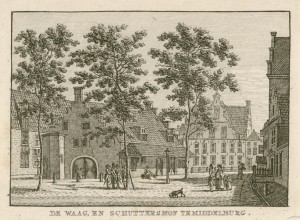The Dutch peninsula of Walcheren, in Zeeland Province (literally: “Sealand”) has been involved in the history of slave trade and slavery in many ways. Merchants started to explore the possibilities back in the 16th century. Branches of the VOC and the WIC were located in Zeeland. The trade in enslaved people was even ‘core business’ for the MCC (Middelburgse Commersie Compagnie).
From 1732-1807, the MCC has bought 31.095 enslaved African people, with the intention of selling them in the West Indies. In Africa, the MCC traded goods for enslaved people. These people were then transported across the Atlantic Ocean and sold to merchants and plantation owners. With the proceeds in coins, sugar, tobacco or cocoa, the ships would sail back to Zeeland. This form of trade in enslaved people is called Trans-Atlantic slavetrade or triangular trade. Except for the Compagnie, illegal slave traders were also operating from Zeeland.
Traces
In 2005 a slavery monument has been set up by inhabitants of Middelburg (the capitol of Zeeland). Research and activities leading to this monument have been developing in different ways. In 2014, a walking guide was developed titled “Cacao, suiker en slaven” (“Cocoa, Sugar and Slaves”). The tour was initiated by the city of Middelburg, in cooperation with Peter Sijnke (Zeeland Archive) and Johan Francke (Zeeland Library).
Mapping Slavery will develop a Slavery Heritage Guide of Zeeland. The documents in the Zeeland archive about the MCC have visualized many aspects of the slave trade. The archive is very detailed, complete and in excellent condition. This is why in 2011, UNESCO placed the archive on the World Heritage List Memory of the World. In 2014, the national commemoration of the 200-year ban on slave trade took place in Middelburg.
[bron: Zeeuws Archief][:]



